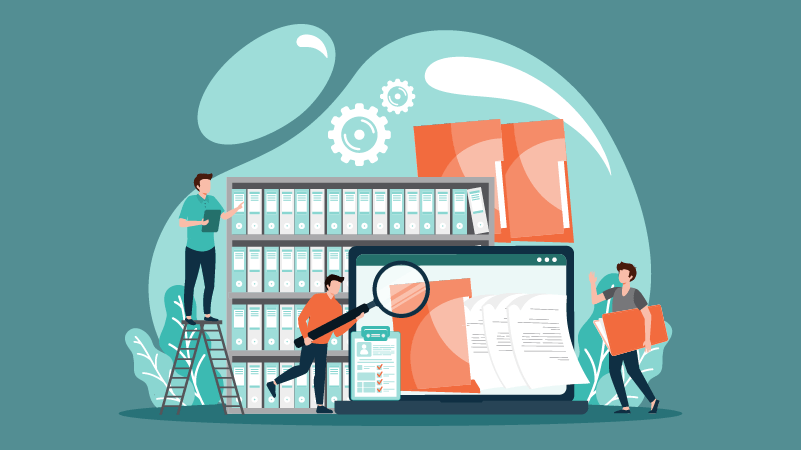
Along with Content Services and Business Process as a Service (BPaaS), information governance is a relatively new term that has gained traction recently, but why?
Information governance is about the effective and efficient use of information in your organization, helping you to make better decisions and to achieve your goals. In this way, information governance has the potential to transform information into knowledge and to help your organization evolve.
This blog explores how information governance compares to records management and how you can take advantage of it.
What Is Records Management?
According to the Association of Information and Image Management (AIIM), records management, “refers to a set of activities required for systematically controlling the creation, distribution, use, maintenance, and disposition of recorded information maintained as evidence of business activities and transactions.”
More commonly associated with physical records (storing documents in filing cabinets and offsite storage), electronic records management (ERM) includes any electronic document, including email, which is where it can be confused with information governance. Records management also includes retention and disposal policies for every document type.
Simply put, it’s our belief that records management is now a sub-set of information governance.
What Is Information Governance?
In addition to records management, information governance also includes the following:
- Governance of information that lies beyond what may be contained in records management software, including paper, electronic documents and multimedia in whatever structured or unstructured system maintains it(e.g. multiple records management, document management and enterprise content management (ECM) systems, shared drives, cloud files shares, departmental filing cabinets, etc.)
- Email management: including both policy and archival
- Information security
- Information rights management (IRM)
- Auditing: both security and information integrity
- Compliance: both internal and external
How Can You Profit from Information Governance?
Because information governance is about people, process and technology, it’s most important to first identify gaps you may have in each of the three areas across the areas described above and then determine the negative impact these gaps are having on your organization. Only then can the right combination of process improvement, technology enablement and business process outsourcing can be identified.
Once identified, it then comes down to choosing the right partner(s) to implement the steps needed to achieve information governance. As with ECM, information governance can be daunting if you start at the enterprise level, so it can be easier to manage and achieve quick wins if implemented first at the departmental level, and both accounts payable and human resources are often the top candidates.
If you need help getting started, MetaSource can assess the information governance gaps in your organization and recommend a solution that includes a progression of steps that allows you to quickly get started.
